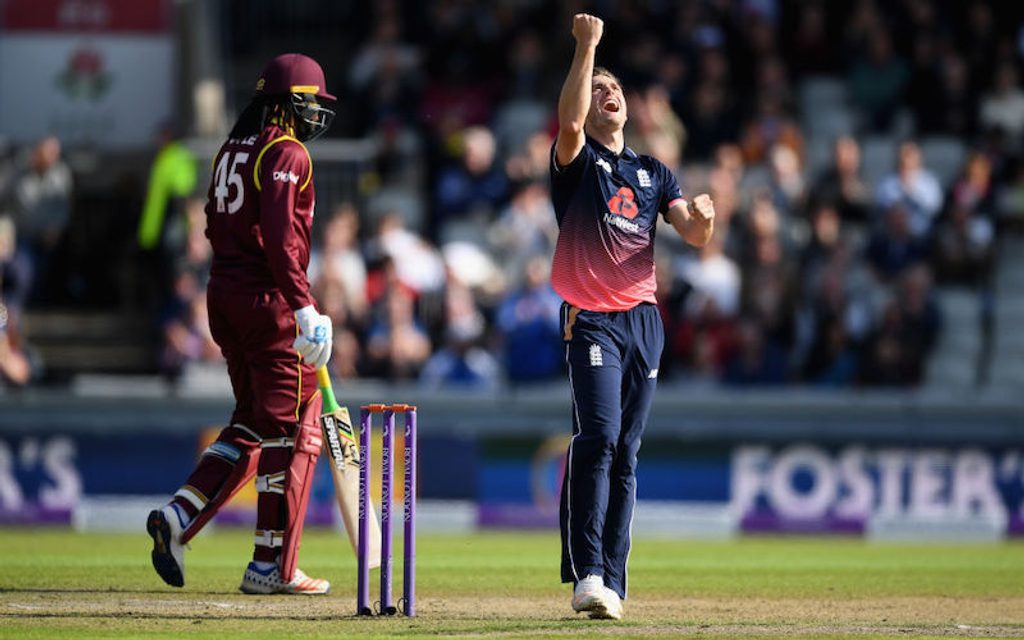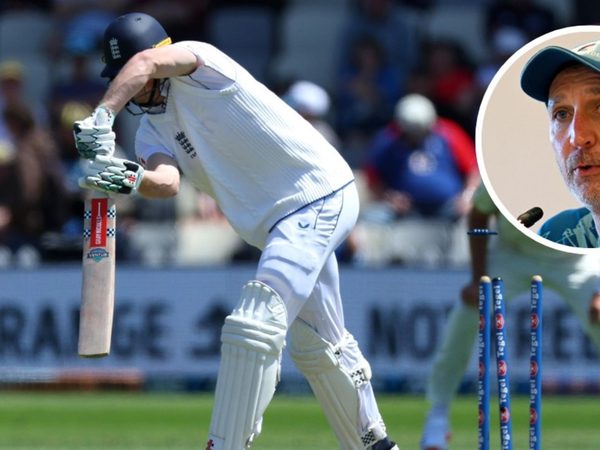
Woakes was talking as part of NatWest CricketForce, a summer programme making it easier for everyone to play, experience and follow cricket. Join the conversation by following @NatWest_Cricket and #NoBoundaries on Twitter, Facebook and Instagram.
England’s most reliable 50-over seamer unpicks the challenges of bowling at the start and the finish of a one-day innings.
Part 1: The first over
What are your initial tactics?
As a new-ball bowler you need to try to take wickets, because you know the white ball doesn’t really swing. The only time the ball is likely to do anything at all is during that first over. So the most important thing with the new ball is assessing the conditions. It’s like the first morning of a Test match, you need to figure out what length is best to bowl, and what length is going to be the hardest to hit.
What are you looking for from your very first delivery?
First ball, you’re going to see if the ball swings, if that new ball swings at all. So you want to be quite full of length. You might be encouraged by a little bit of swing from your first couple of balls, which will give you potentially six balls of swing, but then it will stop.
Part 2: Settling in
When the swing stops, what next?
You go into a ‘heavy length’ and look to hit the top of off stump. It might vary for different players: batsman X might not be as good in the channel outside off stump, or batsman Y might be better if you bowl straight, and so you push it wider. We do a lot of analysis on batters. But more times than not, you’re trying to find the right length to hit the top of off stump.
When do you bring in ‘cross-seam’ deliveries and other variations?
Once that swing is completely gone. So by your second over you’ll be trying cutters, slower balls and cross-seam deliveries. You’re trying to assess things as fast as possible. If you don’t try one until your fourth or fifth over, you’ve effectively lost that chance to bowl some effective deliveries. So you have to try them sooner rather than later.
Still lost for words… not sure it will ever sink in! Thanks to everyone for messages of support before, during and after this amazing journey with the best bunch of lads! So so proud of this TEAM!
England – World Cup Champions! ? pic.twitter.com/v6S4Wby4gL— Chris Woakes (@chriswoakes) July 16, 2019
Do you have a preferred slower ball at this stage?
The conventional off-cutter is probably my go-to option at the top of the order. I run my fingers down the right side of the ball and it pitches and turns like a conventional off-break. That’s the theory at least!
 Woakes’ limited-overs prowess has made him an IPL and Big Bash regular
Woakes’ limited-overs prowess has made him an IPL and Big Bash regular
In Focus: Anticipating the batsman’s movements
- Watch the batsman for as long as possible. Watch the feet, not the eyes.
- Leave any adjustments as late as possible. By the time you’ve landed on your back leg, if he’s moved by then, you’ve still got time to adjust.
- Have conviction. Most of the time you need to know what you’re going to bowl by the time you get to your mark. Then if you execute your skill and he outdoes you, at least you’ll know he’s played an amazing shot.
- Don’t be fooled. It’s not easy though! Some players are so good at faking it. Jos Buttler, for example, is so difficult to read. It’s tricky to figure out when he’s going to shuffle because he has that little step away to the leg-side – sometimes he fakes to go, and then returns to his original stance. He’s always playing with your mind!
Part 3: The Death Overs
Are you now looking to bowl six different deliveries per over?
It’s dependent on the batsman. If he’s facing his first ball, my first delivery will probably be to hammer a length or hit him in the box, giving him no room to free his arms. I will bring the field in and try and get a few dots on him while he’s still new to the crease. If it’s someone like Chris Gayle and he’s 130* and I’m bowling in the 45th over, I’m going to look to second-guess him and bowl a different delivery every time.
Which slower balls do you favour at the death?
I’ve got a newish one which is kind of just seam-up but I hold it back, I don’t bend and cock my wrist. I got a wicket in the last West Indies ODI [in March] with it, I got Shai Hope out bowled. The secret to bowling it is to keep your wrist cocked. Normally you’d flick your wrist when you bowl your normal delivery, but in this instance you just keep it locked in place and don’t flick it.
“The argument that cricket was as visible as it could have been is over, for ever. Yesterday was what sport is all about. It turns out that having lots of money is only part of it.”
Editor of @WisdenAlmanack @the_topspin on England’s #CWC19 win.https://t.co/DYqVWFnDU6
— Wisden (@WisdenCricket) July 15, 2019
And the one out of the back of the hand?
I probably only bowl it right at the death, because of the fact that you’re trying to deceive the batsman and get it to dip in the air a little bit. But still, whatever slower ball you’re bowling, the most crucial thing is your length. You must land it right, or it’s off!
Plans In Action: Woakes v Gayle, 1st ODI, Old Trafford, 2017
 Woakes has become England’s front-line bowler in ODI’s with 133 wickets
Woakes has become England’s front-line bowler in ODI’s with 133 wickets
- Conventional swing in the first over sees Gayle play and miss at his first delivery, and then edge an out-swinger to Root at slip, who drops it.
- With the swing gone, Woakes goes to off-cutters and ‘heavy length’ balls.
- Gayle readjusts, finds his range, and gets one six away.
- In his fifth over, Woakes goes shorter again, tying Gayle down. Something has to give. Gayle miscues another heavy length ball, and Root takes the tumbling catch at extra-cover.








